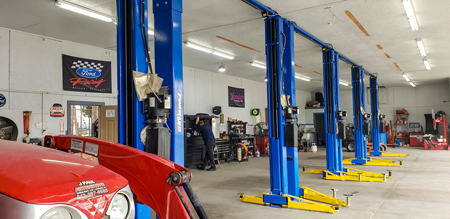All Categories
Featured

Your cars and truck's battery is just one of one of the most critical elements for a reputable driving experience. It provides the power required to begin your car and runs much of your automobile's necessary functions. However, like all car parts, batteries don't last for life and can shed their toughness over time. Knowing how to inspect your car's battery wellness can conserve you from unexpected failures and ensure your vehicle remains to start smoothly every single time. In this guide, we'll walk you via some simple steps to check your auto's battery health and wellness.
Indications Your Cars And Truck Battery Might Be Failing. Prior to diving into exactly how to check your auto's battery health and wellness, it is very important to know the caution indications that your battery could be nearing completion of its life. Here are some common indicators:
Slow Engine Crank: If your automobile is sluggish to start or the engine takes longer to crank than typical, your battery may not be offering adequate power. Dim Lighting: Dimming headlights or indoor lights, particularly when starting the automobile, is an additional sign that your battery might be shedding power. Check Battery Light: If you see the check battery light on your control panel, it can show that the battery is weak or there's an issue with the billing system. Corrosion on Battery Terminals: An accumulation of corrosion around the battery terminals (generally a white, grainy material) can prevent the battery's link, resulting in efficiency issues. Aging: Cars and truck batteries typically last between 3 to 5 years. If your battery is older than that, it may be time to examine its health. If you observe any of these signs and symptoms, it's an excellent concept to inspect your battery's health to determine if it requires substitute.

Just How to Examine Your Vehicle's Battery Health and wellness. Aesthetic Assessment:. Beginning with an easy aesthetic assessment of the battery. Look for any noticeable indicators of wear or damages. Examine for leakages, splits, or protruding, which could suggest that the battery is overcharged or defective. Additionally, inspect the battery terminals for deterioration, which can conflict with the battery's ability to charge and discharge effectively.
Inspect the Battery Voltage:. One of the best ways to examine your battery's health is to determine its voltage. You can do this making use of a multimeter (available at many automobile components shops) Below's exactly how to do it:
Switch off your car and guarantee that all electronic devices (lights, radio, etc) are off. Set your multimeter to DC voltage (V) and select a series of 20. Connect the multimeter's red probe to the positive (+) incurable and the black probe to the unfavorable (-) incurable on the battery. A healthy, completely charged battery must review around 12.6 volts. If the voltage is below 12.4 volts, your battery is weak and might require charging or replacing. If it's below 12 volts, the battery is most likely stopping working. Perform a Lots Test:. A lots test helps determine just how well the battery does under tension. This examination is generally done by a professional mechanic, but you can carry out a simple version in your home if you have a battery lots tester. Here's how:
With the vehicle off, gauge the voltage as you carried out in the previous action. After that, begin the car and gauge the voltage once again. If it drops considerably when the engine starts, this can show that the battery isn't holding a charge properly. You can additionally inspect just how well the battery powers devices (like lights or cooling) while the vehicle is running. If they flicker or act unevenly, it could signal a failing battery. Test the Charging System:. If the battery appears great, yet you're still experiencing problems, it might be a trouble with the generator or the billing system. To examine this:
With the cars and truck operating, measure the voltage at the battery terminals once more. An appropriately operating alternator needs to create a voltage of 13.7 to 14.7 volts. If the voltage is listed below this array, the alternator may not be charging the battery appropriately, which can bring about battery failing. When to Change Your Vehicle's Battery. If you have actually executed the checks mentioned above and your battery is still underperforming, it might be time for a substitute. In addition, if your battery is greater than 3 years old and has actually revealed indications of deterioration, it's typically a great idea to change it before it stops working totally.
A new battery is crucial for guaranteeing reliable car performance, especially in extreme weather condition conditions where battery power can be influenced. If you're unclear regarding the results of your battery wellness check, consider visiting a professional mechanic who can perform a much more comprehensive analysis.
Conclusion: Routine Battery Maintenance Is Secret. Your vehicle's battery is vital for its total functionality, and normal maintenance is essential for maintaining it in leading problem. Routine inspections and basic tests are the best means to expand the life of your cars and truck's battery and prevent bothersome failures.
Latest Posts
Sturdy and Fashionable Fence Solutions from Washington Fence
Regarding United States: Family-Owned and ASE-Certified
Sturdy, Energy-Efficient Roofing System Coatings for Industrial Buildings
More
Latest Posts
Sturdy and Fashionable Fence Solutions from Washington Fence
Regarding United States: Family-Owned and ASE-Certified
Sturdy, Energy-Efficient Roofing System Coatings for Industrial Buildings